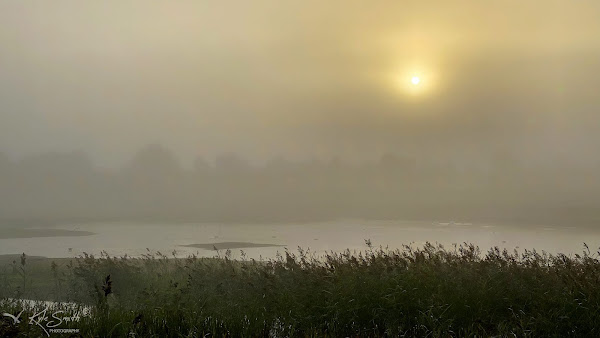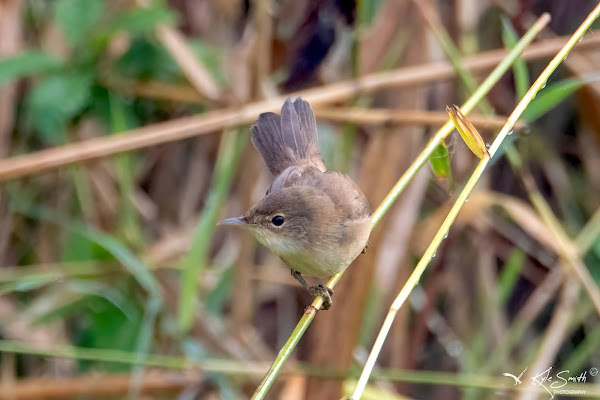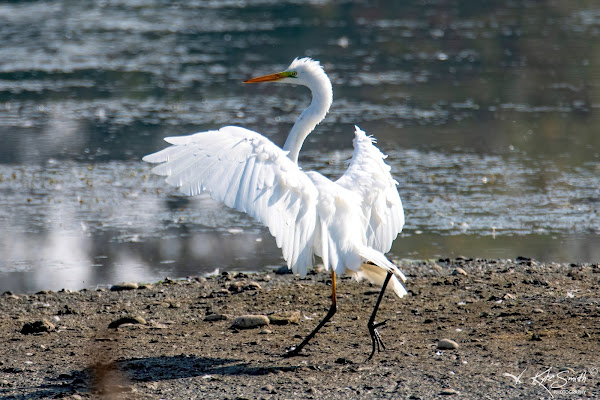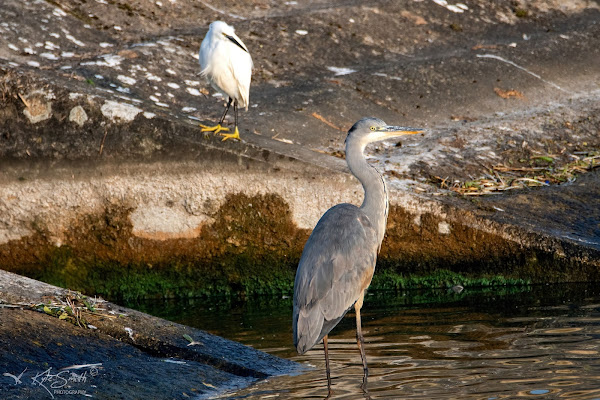It had been a while since I'd taken a flexiday at work and so it was a treat to be on a sneaky outing - as I had the day to myself, I thought I'd travel further afield and decided on a visit to RSPB Frampton Marsh. The satnav suggested that the journey would be around 2h35m but I made good time and arrived in 2h20m; just before 8.30am. The Visitor Centre was closed but a map and sightings from the previous day were displayed on the front of the building. I worked out which way was "out" and prepared to set off - I thought I'd struck lucky when another birder strode out ahead and I followed, hoping he had an idea where to start. The footpath from the Centre was closed and under repair so we made our way along the road, moving onto the verge as a lorry carrying material to rebuild the path tried to pass and deliver its cargo.
The chap I was following turned left around the Wash Trail, heading for the Reedbed Hide and I followed suit - this was in some ways to prove to be a major blunder. Walking along the path I could see numbers of dunlin and ringed plover but also 2,000+ black-tailed godwits resting in the shallows - quite a sight. I stopped in the hide and snapped a few shots of the assembly, but it was difficult to do anything other than create a panorama as the birds were strung out over quite a distance. I stayed for a short while but there was little sign that any of the birds would start to perform and so I set out on the Wash Trail once more.
To my right there were pools and channels containing various ducks and more black-tailed godwit. Out of the corner of my eye a wader caught my eye as it briefly flew above some scrub along the water's edge. I paused and waited for it to come into view which it did after only a few minutes. My view was obstructed but after reviewing a few photos I was excited to find it was a pectoral sandpiper - a lifer for me. It would be a good day whatever followed. Eventually the bird worked its way along the water's edge and came into better view giving an opportunity for more photos but at a distance.
The sandpiper flew left and out of view and so I followed seeing more black-tailed godwit and a snipe. Looking back, I also saw some highland cows and couldn't resist taking a photo - they just looked so settled and calm.
I followed round and found several meadow pipit before turning down to the East Hide. On my way down the path a reed warbler flushed ahead and crossed the boardwalk a couple of times. I had one good view but didn't manage to get a photo. From the East Hide I could see a ruff but nothing else of note so didn't stay long. I climbed up the steps and onto the sea wall, eventually coming level with a couple of guys heading the other way - between us we courted c30 yellow wagtails feeding around a small herd of cattle (I suppose it is appropriate as they are apparently also known as cattle wagtails). Looking down the slope to the still wet plain I could see some travelling meadow pipit but then a couple of ruff dropped down not too far away. They fed and moved further from my position.
It wasn't long before I passed through a gate, having made safe passage through another small herd of cattle "owning" the footpath; I stopped to sit on a bench. I chatted briefly with a couple who informed me that there had been four short-eared owls hunting here until an hour ago, but they appeared to have followed the water out. I followed the sea wall for a while hoping to catch up with an owl but with no success - damn, it would have been useful to know the tides and that I should have made my way here first. I hung around the area until lunchtime and then made my way back to the car. I bumped into the couple again and they pointed out a peregrine and marsh harrier they'd been following for a little while.
After lunch I walked back to the sea wall and spent some time searching for owls, again to no avail. Eventually I thought I'd give it a break and go in search of other species and decided to have another look from the East Hide. This time there were a couple in the hide, and I joined as they scanned the water. The same species as earlier were still on show but as the couple packed up to go, we found first one and then a few spotted redshanks. Soon a couple of ruff joined them but obviously different birds to earlier due to their different plumage.
We could see a few people gathering on the path back to the Reedbed Hide and made for there. When we arrived, they reported that the pectoral sandpiper had showed again but had flown behind the reeds and out of view. A few people stopped and we managed to have a short view of the sandpiper, plus two little stints and a dunlin.
After a while there was no further sign of the sandpiper, so I made my way back along the sea wall, hoping to find owls but only saw the peregrine again and a number of kestrels. I really must do more research before I visit - but now better informed for next time. Eventually I had to pack up and make for home – the traffic would be heavier at this time of day.
































































